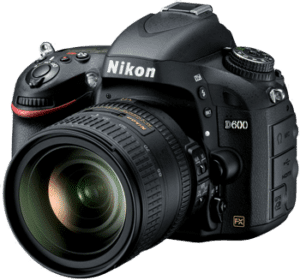Photographic Equipment
 Cameras and other pieces of photographic equipment are subject to corrosion, just like any other piece of metal.
Cameras and other pieces of photographic equipment are subject to corrosion, just like any other piece of metal.
Using TC-11 on cameras takes of a lot of discretion. You want to maintain the protective finish on the camera without letting the film get thick enough to accumulate dirt, or even worse, sand. The lubrication required for the moving mechanisms is minimal, as in a thickness measured in thousandths of an ounce. Even the tiniest amount of TC-11 will seal the annular gaps and lubricate the articulated mechanisms.
On the other hand, some TC-11 customers have used TC-11 on very expensive optical equipment for years with very positive results. This includes camcorders and telescopes that cost thousands of dollars.
It takes a very small amount of TC-11 to treat a camera or a piece of optical equipment. The best way is to put several drops of TC-11 on the camera and to spread the drops around with a clean soft cloth.
The objective is to end up with an extremely thin coat of TC-11. Thin as in thin to the point of being almost non-existent. In the case of cameras, the top of the TC-11 film is below the top of the micro-peaks that make up the paint film, i.e. the TC-11 is absorbed by the paint film. If TC-11 is sitting on top of the camera paint film, dust accumulation may be a serious problem.
You can tell you have the proper amount of TC-11 on the camera when the paint on the camera has its original appearance but it is not slippery or sticky to the touch.
In the case of cameras, it is much better to under-apply TC-11 than to over-apply it.
Do not apply TC-11 to the inside of the camera. This is an area left strictly to the professionals.
If you inadvertently get some TC-11 on the lens, this is not a source of concern. A lens cleaner will easily remove the TC-11.
TC-11 will not affect even the most sensitive rubbers, paints, and plastics used to build cameras.
Tripods and Other Equipment
Tripods and camera stands are ideal applications for TC-11.
These items do not have the extremely delicate moving mechanisms found on cameras. Tripods and related equipment have a large number of articulated mechanisms that cannot be painted. TC-11 is an ideal treatment, because it keeps the mechanism corrosion free, which means that they maintain the original freedom of motion.
TC-11 is compatible with all of the paints and plastics used to manufacture both cameras and auxiliary equipment.
The objective is to maintain a fairly robust film of TC-11. Any TC-11 that migrates from the tripod to the camera will help the camera, not hurt it.
Using Cameras in Marine Environments
All of us to take our cameras to the lake or the beach or on boats to record the experience. Without TC-11, you are really asking for trouble in this situation. You don’t have to get a camera wet to destroy it. If you are in a salt breeze (which is almost any time you are around the ocean), the salt will get deposited on the camera even if salt water doesn’t get on the camera.
 If you notice a film on the camera after a day at the beach, you have to remove it, which is a lot easier than it sounds. The only effective way to remove salt is to flush it with water, or better yet, Salt-Away and water. This is totally impractical in the case of camera equipment. Wiping the camera down with cloth is only partially effective, because it is virtually impossible to remove the salt film with a cloth. After a certain point all you are doing is moving the salt around.
If you notice a film on the camera after a day at the beach, you have to remove it, which is a lot easier than it sounds. The only effective way to remove salt is to flush it with water, or better yet, Salt-Away and water. This is totally impractical in the case of camera equipment. Wiping the camera down with cloth is only partially effective, because it is virtually impossible to remove the salt film with a cloth. After a certain point all you are doing is moving the salt around.
By applying a very thin film of TC-11 as recommended, it is possible to minimize the long term impact of using the camera in a salt breeze environment. The salt never touches the camera – it sits on top of the TC-11 film. The salt cannot travel down sleeves or threads, because the TC-11 film is “already there”. In addition, the hydrocarbons in TC-11 react with the chlorine in the salt to neutralize the chlorine.
A word of caution: don’t overdo it. Cameras are extremely delicate pieces of equipment. A single grain of sand can easily ruin a camera. Never put enough TC-11 on the camera to start picking up dirt. You will notice the paint change color when you have enough TC-11 on it. That is all the TC-11 you need. After an hour, wipe off the camera with a soft clean cloth. The protection will last for weeks or months, depending upon the specific exposure environment.
Equipment such as tripods and light stands are a completely different situation. There are no precision moving parts on auxiliary equipment. A robust coat of TC-11 will lubricate and protect the equipment for an extended period of time. If the equipment is stored in a dark closet, the TC-11 film can last for more than a year.
